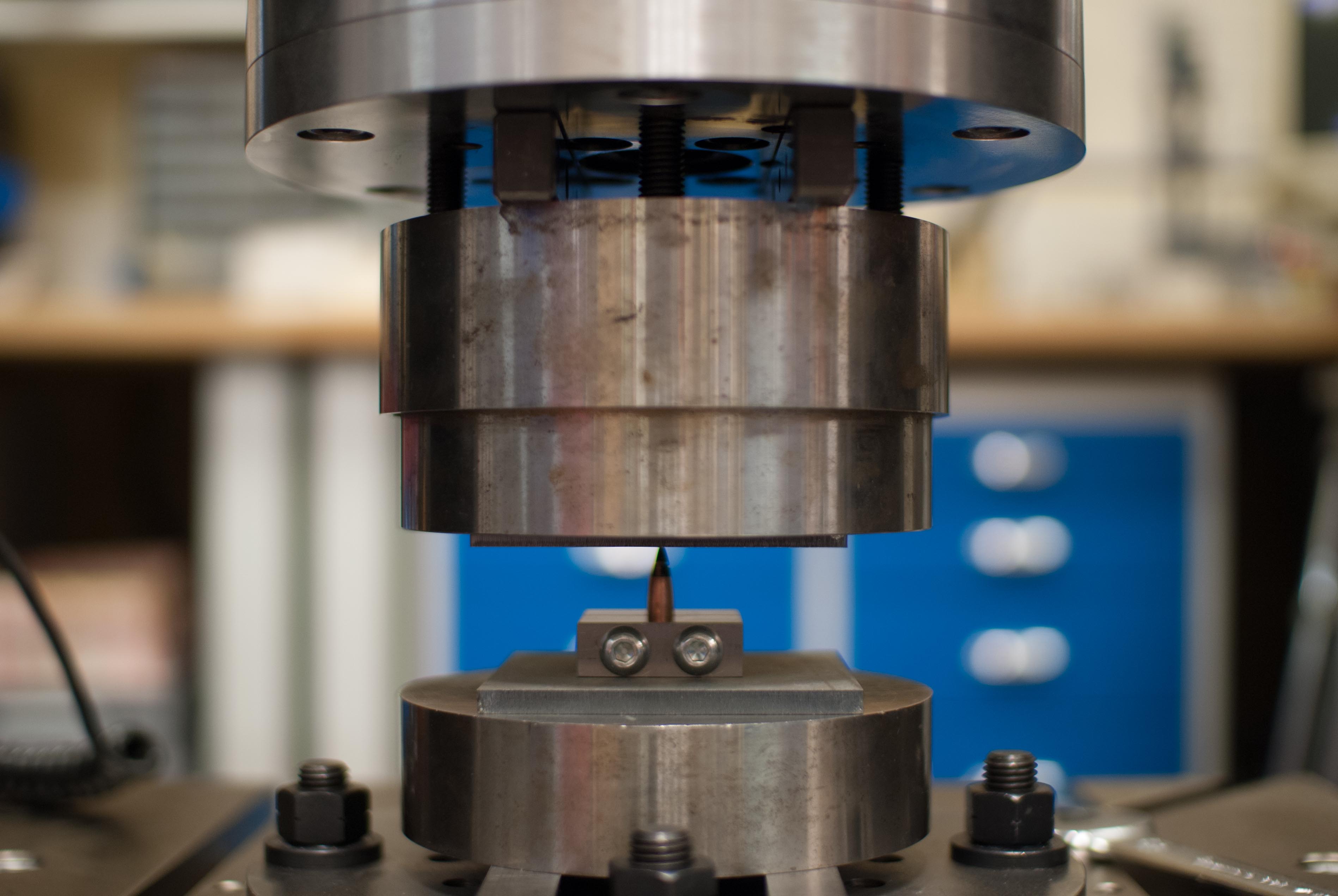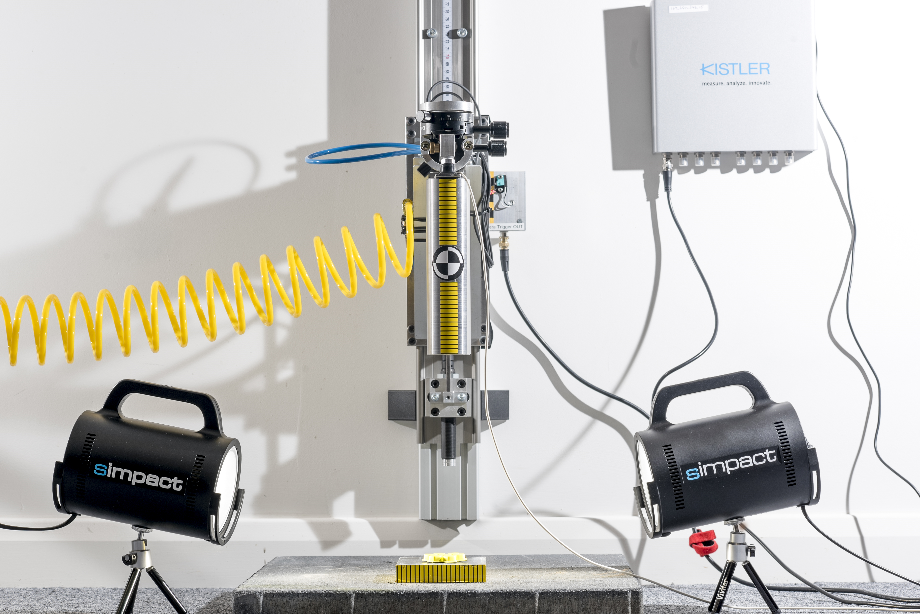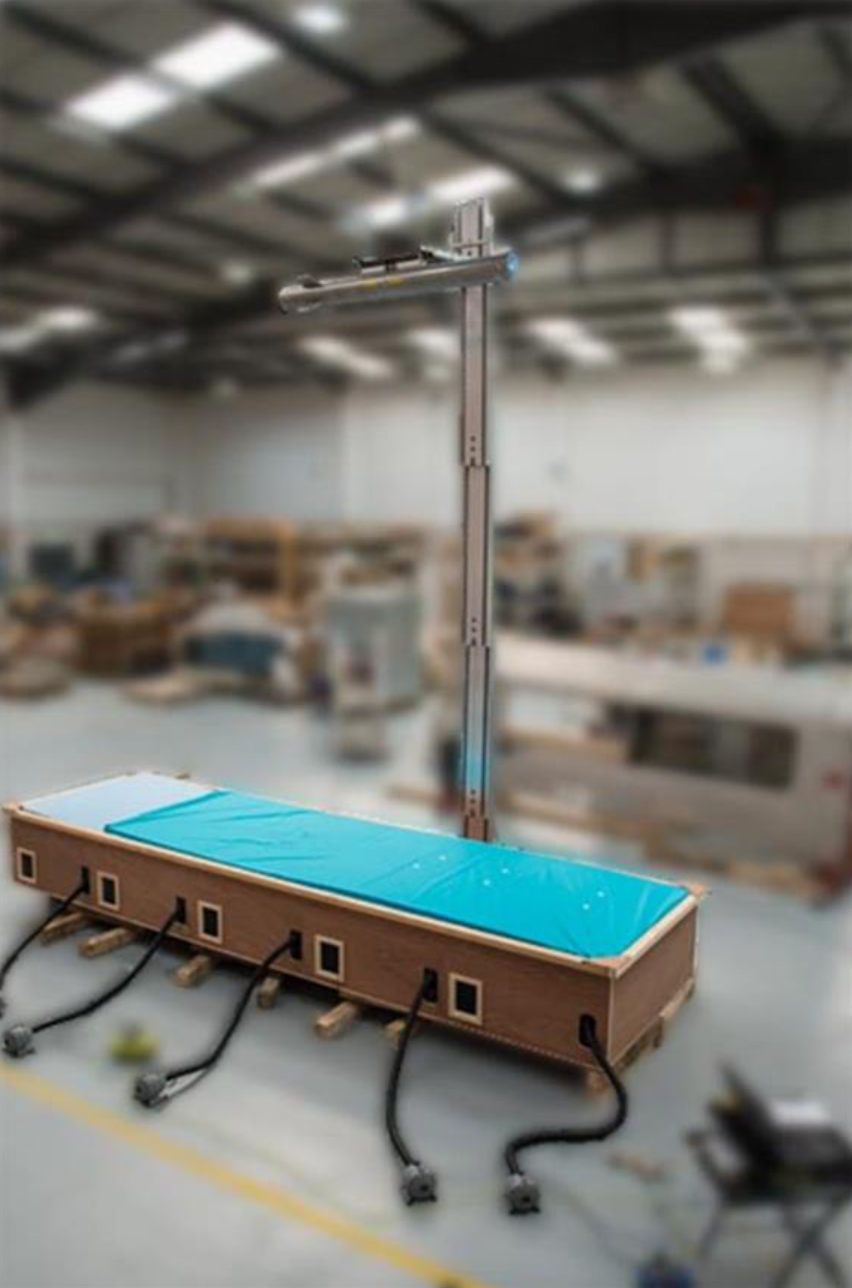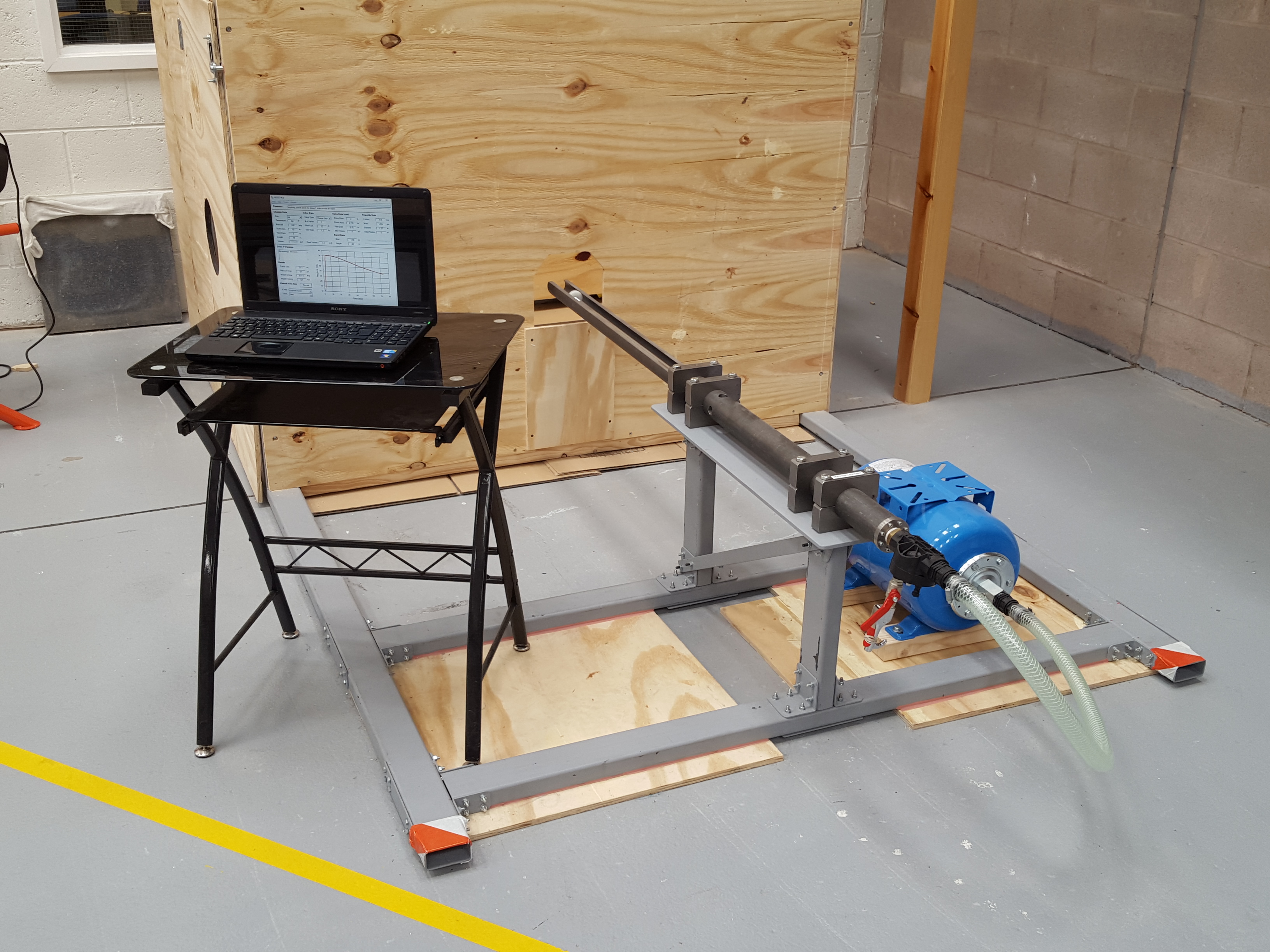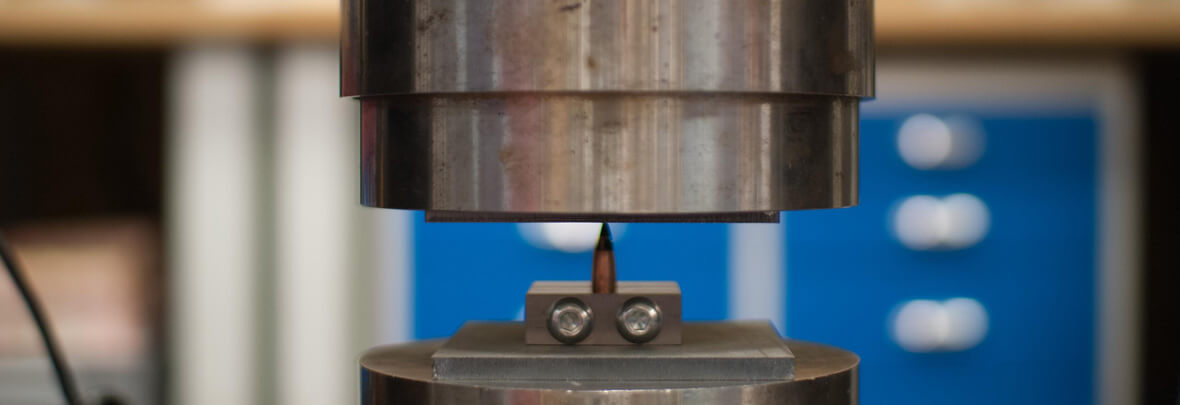
Experimental Testing
At Simpact we recognise the importance of experimental tests, both as stand-alone tests and for the purpose of numerical correlation. This is the reason why our numerical models can be so accurate — our virtual materials are engineered in such a way to exactly match the performance of real-world materials in the actual test conditions.
Thanks to our in-house facilities and partnerships, we always offer our customers the right tool for the job, be it a full-scale blast analysis or a quasi-static tensile experiment.
Quasi-Static Testing
Establishing the basic mechanical properties
Understanding the static response of materials is a fundamental starting point for understanding material and component response to loading. We make use of a range of tensile test machines including a 100kN and 250kN Instron tensile test machine at the University of Warwick and the University of Leeds respectively. We gain essential information required for the material models which are one of the key ingredients for a robust finite element prediction.
For the capture of accurate material test data, either a mechanical or optical linear extensiometer is used to record the actual extension of the sample w.r.t load. This eliminates any slippage in the clamps. Also available with this equipment is an environmental chamber and optical 3D deformation analysis equipment and software which allows us to quantify material performance and carry out digital image correlation (DIC).
Simpact have designed and developed a set of clamps which are suitable for the quasi-static mechanical testing of ultra-high strength fabrics such as aramids. Structures like these cannot be tested in standard clamping arrangement because of the premature failure that can be induced at the clamps.
Guided Gravity Drop Test Facility
High Precision Impact Testing - SDR 2200
In 2015 Simpact commissioned their own in-house drop test facility so that they could carry out high precision drop testing and offer this impact evaluation method to their clients. Designed and developed by Simpact, it is a bespoke, linear system that guides the device to be tested to the impact surface. This provides consistent impact orientation and velocity.
This means that we can replicate a load case which may be detailed in a standard (such as the transit drop procedure described in the US Department of Defence standard MIL-STD-810G) which is used for the drop test evaluation of portable devices. It has a fully adjustable rotating head and air suction release with a range of suction cups suitable for holding a range of geometries.
Its open and flexible installation allows for various load cases, close camera work and lighting positions. Drop test surfaces include armoured glass which allows for an underside camera view of the impact. It is perfect for materials characterisation and impact testing at high rates of strain. The SDR 2200 is an invaluable tool for CAE model correlation.
Maximum drop height is 2.2m and the head can carry components upto 3kg. We have developed the facility for integration work with our instrumentation and data aquisition hardware, which for this application includes high speed camera, force platform (rated to 6kN), velocity gate, accelerometers (1000g and 6000g) and pressure sensors.
Free Fall Gravity Drop Test Facility
High Energy Drop Testing - SFR 6300
Commissioned in 2017 and developed for the specific drop testing of high-value defence related items, the SFR 6300 is a bespoke free-fall rig suitable for the drop testing of heavy objects up to 350kg at a height of up to 6.3m (21.5kJ).
An electromagnet release mechanism provides a clean and remote release of the drop item at height. Components or assemblies under investigation can be either dropped at height or constrained at ground level and impacted by a falling mass of specific geometry. The SFR 6300 is perfect for the drop testing of heavier components or assemblies on a larger scale.
Used in conjunction with our instrumentation and data acquisition hardware, which for this application includes the high speed camera, accelerometers (50g and 100g) and pressure sensors.
Pneumatic Launcher Test Facility
High Speed Impact Testing - SPL 6000
The SPL 6000 is a bespoke high-pressure pneumatic launcher specifically designed to provide consistent high speed impact testing in a contained environment.
Although originally designed to impact train windows with a 250g steel ball, diameter 40mm (as per the impact tests detailed in the rail standard GMRT2100), the pneumatically actuated push rod can accept a range of adaptors or sabots allowing for the acceleration of a variety of objects. The SPL 6000 is perfect for the high speed impact testing of components or assemblies at a range of velocities.
Used in conjunction with our instrumentation and data acquisition hardware, which for this application is specifically the high speed camera, the size of the containment environment is perfect for a DIC (Digital Image Correlation) setup and the dynamic measurement of back face deformation.
Blast and Ballistic Testing
Correlation and validation of armour systems
When lives are at stake, there is no substitute for experimental tests in the correlation and validation of armour systems. Through our external partners, Simpact can offer the capability to test any calibre or projectile up to and including 40 mm at any range from 1 m to 2500 m, plus blast tests in accordance with — among others — NATO and STANAG test protocols. A dedicated Project Engineer will plan and oversee all tests to ensure the exact test conditions are reproduced.
These tests are commonly carried out to support or verify our developed numerical models. We are experienced users of the Digital Image Correlation (DIC) technique and we have successfully used this to measure the dynamic real time displacments of an armour back face. This is an invaluable tool for understanding back face deformation and providing data for CAE model correlation.
For further information on Digital Image Correlation, please see our Case Study The application of 3D Digital Image Correlation (DIC) to blast load cases.
